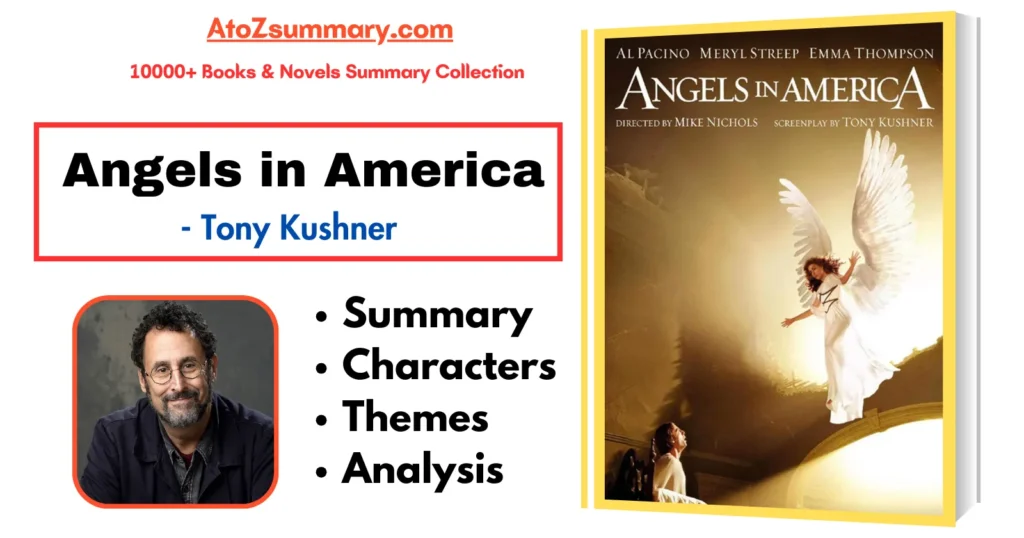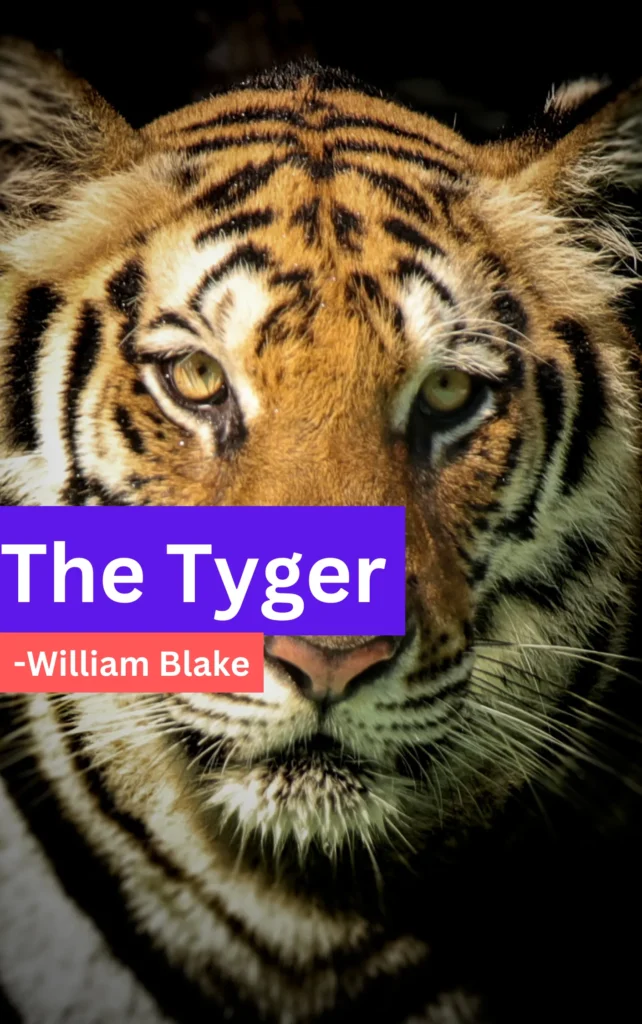
About Poem: The Tyger
| Poem Title | The Tyger |
| Author | William Blake |
| Date of Writing | 1794 |
| Genre | Poetry, specifically a lyric poem |
| Style | Symbolism, Romanticism |
| Form | Six quatrains (24 lines) |
| Themes | The power of God, the nature of good and evil, and the mystery of creation |
| Imagery | Vivid and evocative, with powerful descriptions of the Tyger’s attributes |
| Narrative | The speaker’s contemplation of the creation of the Tyger |
| Publication | Part of Blake’s “Songs of Experience” |
| Influence | An iconic work of Romantic poetry, known for its exploration of the complexities of existence and creation |
| Famous lines | Tyger Tyger, burning bright, In the forests of the night: What immortal hand or eye, Could frame thy fearful symmetry?” |
Themes: The Tyger
The themes of William Blake’s “The Tyger” are:
- Good vs. Evil ➤ The poem explores the coexistence of both good (the lamb) and evil (the tyger) in the world.
- Creation and Mystery ➤ It asks where and why such powerful and fearsome creatures like the Tyger come from, questioning the mysteries of life.
- The Dark Side of Life ➤ It reveals the harsh, fierce, and complex aspects of human existence.
- Fear and Awe ➤ The poem highlights the terrifying and impressive nature of powerful forces in the world.
- Religion and Spirituality ➤ It prompts thought about the divine and spiritual aspects of existence and creation.
The Tyger Poem
Tyger Tyger, burning bright,
In the forests of the night;
What immortal hand or eye,
Could frame thy fearful symmetry?
In what distant deeps or skies.
Burnt the fire of thine eyes?
On what wings dare he aspire?
What the hand, dare seize the fire?
And what shoulder, & what art,
Could twist the sinews of thy heart?
And when thy heart began to beat.
What dread hand? & what dread feet?
What the hammer? what the chain,
In what furnace was thy brain?
What the anvil? what dread grasp.
Dare its deadly terrors clasp?
When the stars threw down their spears
And water’d heaven with their tears:
Did he smile his work to see?
Did he who made the Lamb make thee?
Tyger Tyger burning bright,
In the forests of the night:
What immortal hand or eye,
Dare frame thy fearful symmetry?
The Tyger Summary & Analysis
The Tyger” by William Blake is a thought-provoking and intense poem that delves into the nature of creation and the coexistence of innocence and experience. The poem consists of six quatrains and is known for its vivid imagery and powerful questions. Here’s a stanza-by-stanza summary:
Stanza 1
In the first stanza, the speaker contemplates the creation of a fearsome creature, the “Tyger.” He wonders about the origin of this creature and what kind of powerful, divine being could forge such a ferocious and fiery being.
Stanza 2
The second stanza continues to explore the creation of the Tyger. The speaker asks if the same divine force that created the innocent lamb could also create this menacing predator. He ponders the duality of creation, with one force giving rise to both gentleness and ferocity.
Stanza 3
In the third stanza, the speaker wonders about the tools or means used by this divine creator to fashion the Tyger. He mentions “anvil” and “furnace,” suggesting a blacksmith’s forge, symbolizing a place of intense transformation and creation.
Stanza 4
The fourth stanza questions the motive behind the creation of the Tyger. The speaker asks whether this fearsome creature was made for a specific purpose or intention. He also inquires if the creator felt joy or dread during the act of creation.
Stanza 5
In the fifth stanza, the speaker acknowledges the power and awe-inspiring nature of the Tyger. He mentions its “fearful symmetry” and its eyes that burn with fire. The Tyger is portrayed as a symbol of primal, elemental energy.
Stanza 6
The final stanza returns to the initial question of who could create such a creature. The speaker suggests that the same divine force that created the Tyger also holds the stars in their place, linking the celestial and earthly realms. The poem ends with a repetition of the opening question, emphasizing the mystery and wonder of creation.
FAQs: The Tyger
What is the meaning of the poem The Tyger?
The meaning of the poem “The Tyger” by William Blake is about the power and mystery of God’s creation, and the duality of good and evil in the world.
Why did William Blake misspell Tyger?
Blake misspelled “tiger” to make the word sound older and more mysterious.
What is the rhyme of The Tyger?
The rhyme scheme of William Blake’s poem “The Tyger” is AABBCC
What does burnt the fire of thine eyes mean?
The line “burnt the fire of thine eyes” is a metaphor for the tiger’s fierce and powerful gaze.
What may the lamb and The Tyger symbolize?
The lamb and the tiger symbolize good and evil.
How does The Tyger represent evil?
The Tyger represents evil because it is both beautiful and terrifying, just like evil can be both attractive and destructive.
What does when the stars threw down their spears mean?
The line “When the stars threw down their spears” means that when God created the tiger, the angels were so amazed or scared that they threw down their weapons.
What is an example of symbolism in the Tyger?
The tiger represents the power and mystery of nature, as well as the duality of good and evil.
What is the religious imagery in The Tyger?
The tiger is a symbol of God’s power and creation, while the lamb is a symbol of innocence. The poem asks how a loving God could create both good and evil.
What image of God does Blake present in the poem Tyger?
The image of God that Blake presents is of a powerful and creative force that is both nurturing and destructive.
What is meant by the expression burning bright?
The expression “burning bright” is a metaphor for the tiger’s intensity, power, and beauty. The tiger is described as having “eyes of fire” and “fearful symmetry,” and the speaker of the poem is awestruck by its ferocity and majesty.
What is the conclusion of The Tyger?
The poem ends without answering the speaker’s questions about the tiger, leaving the reader to think about the mystery of creation and the nature of good and evil.

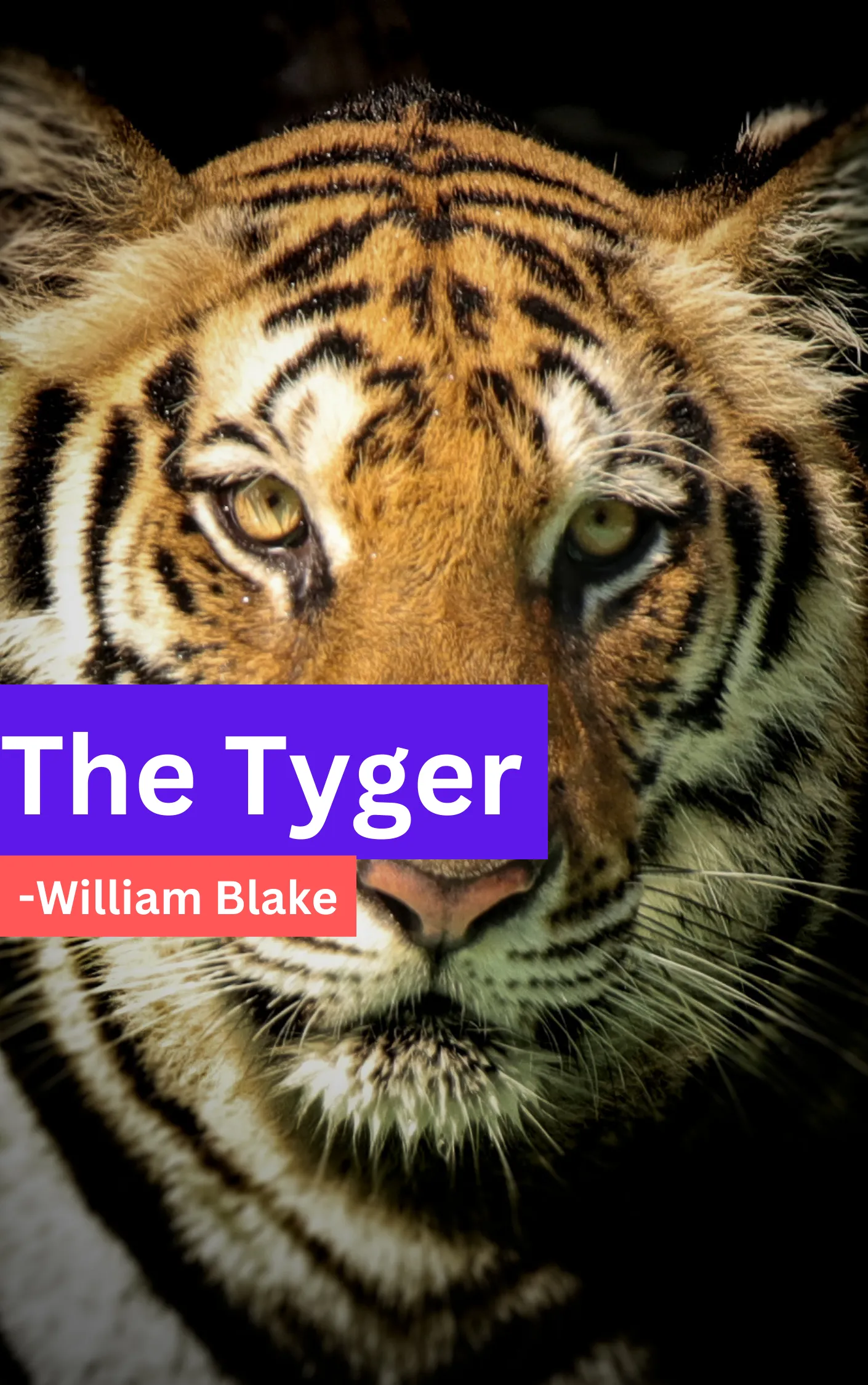

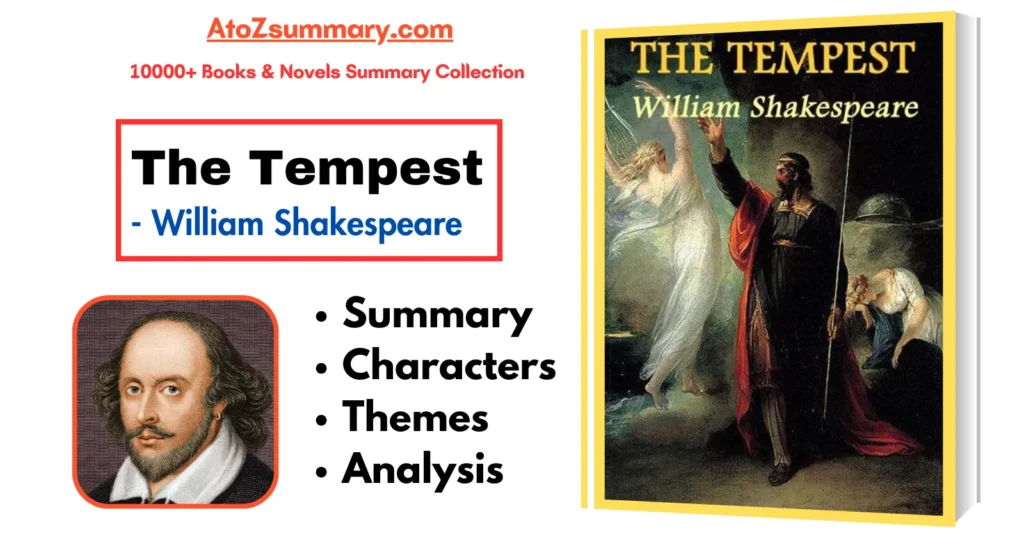
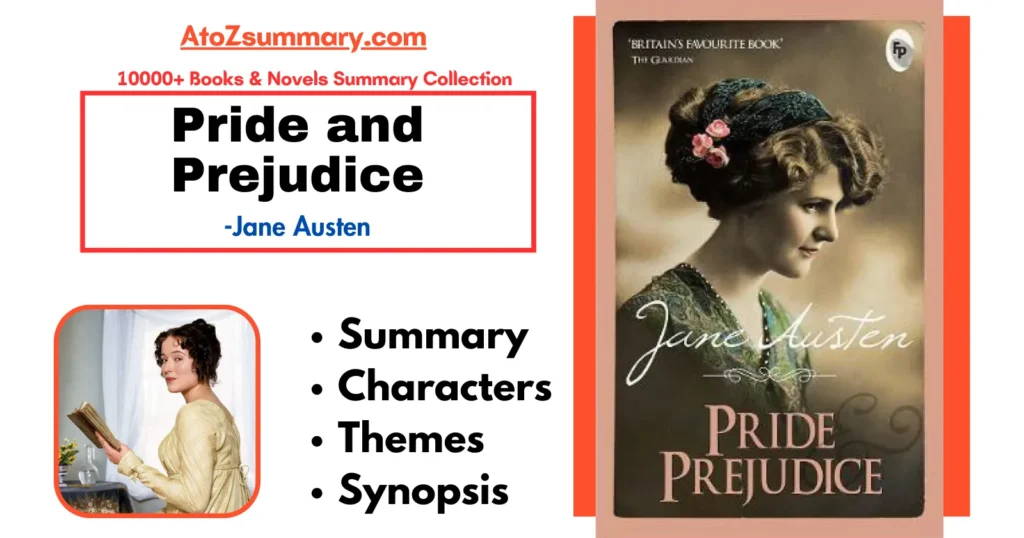
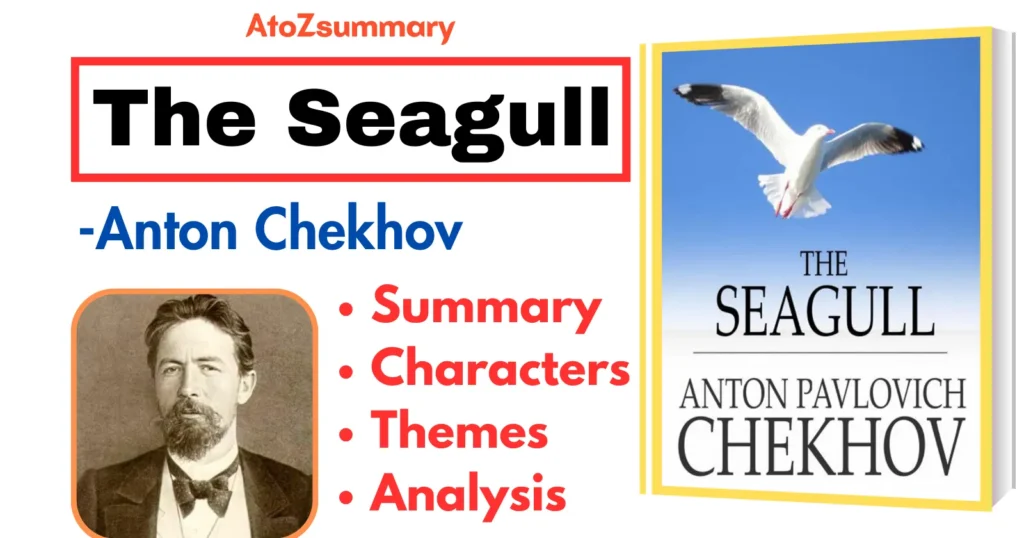

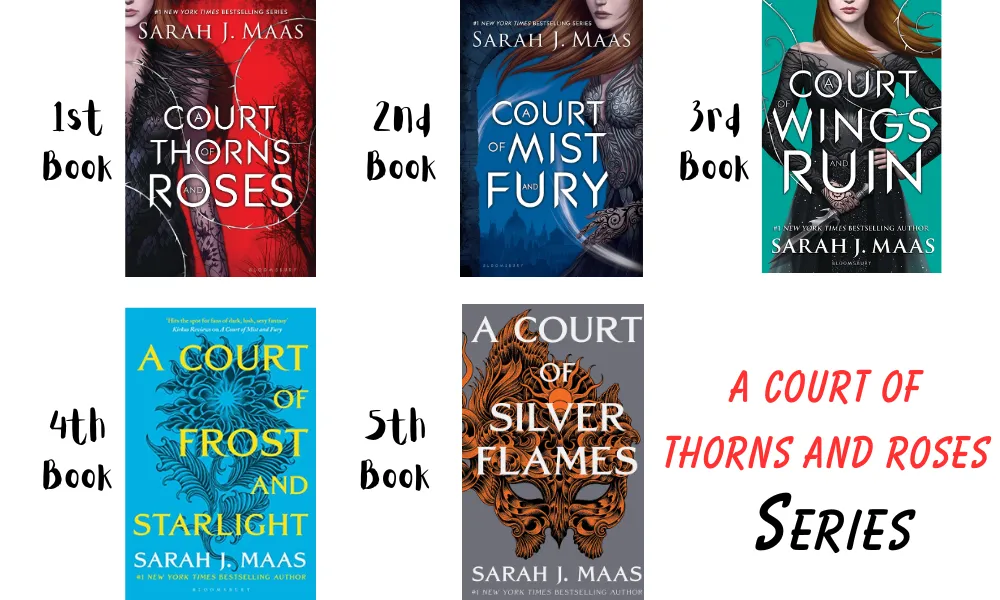

![The Catcher In The Rye Summary, Themes & Characters [by J. D. Salinger] The Catcher In The Rye Summary, Themes & Characters [by J. D. Salinger]](https://atozsummary.com/wp-content/uploads/2023/06/The-Catcher-In-The-Rye-Summary-Themes-Characters-by-J.-D.-Salinger.webp)
